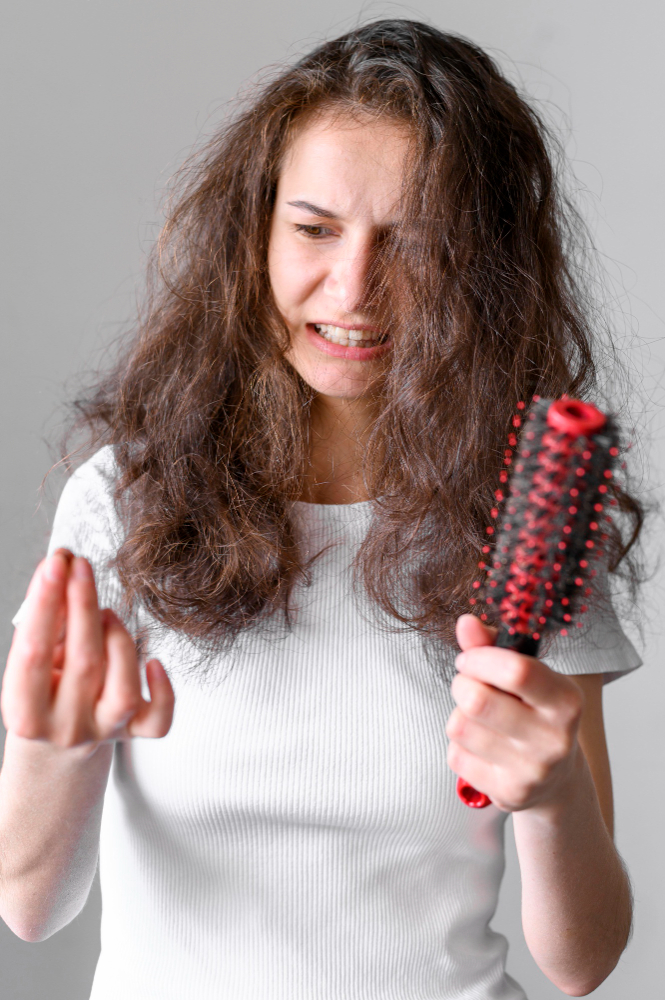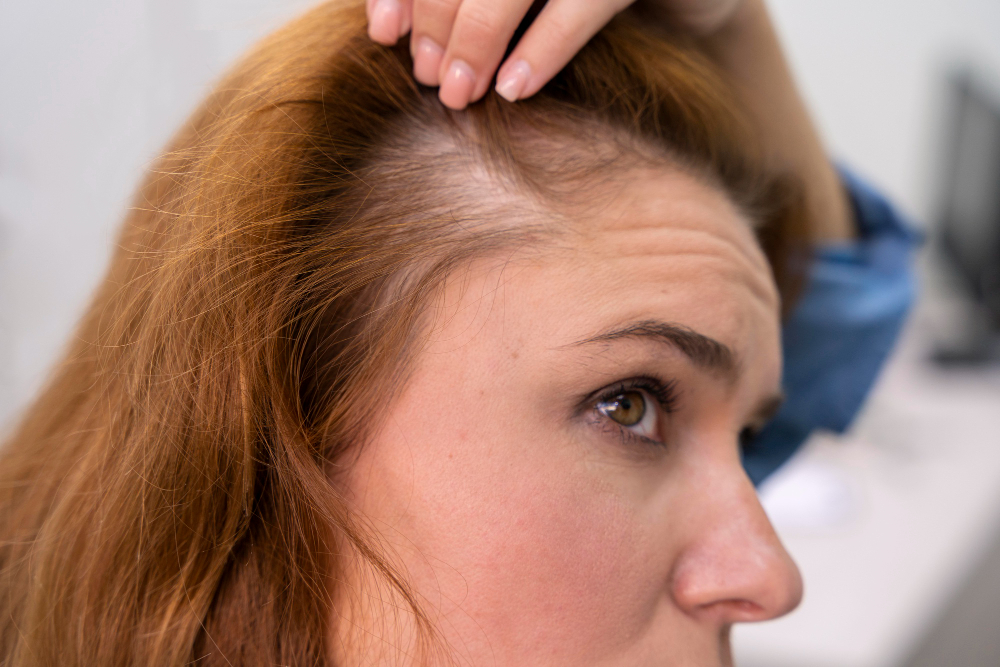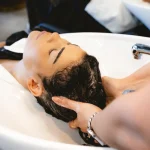As a hair wellness spa, we have dealt with our fair share of hair loss and shedding. Hair shedding is normal and part of the hair growth cycle.
However, when you see wads of hair in a brush, or they are blocking your drain, it becomes a cause for concern. You may be looking at that hair and wondering if you are experiencing hair loss compared to your regular hair shedding.
So, they differ in their understanding of hair loss versus hair shedding and scalp conditions.
Hair Loss vs Hair Shedding: What is The Difference?
While hair loss and shedding are common, there is a distinction between the two. Let’s look at each one.
What is Hair Loss?
When you lose hair, your strands stop participating in the growth cycle and will fall off your scalp without reactivating the anagen, or growth, phase.
If that hair follicle is no longer active and is not replaced by new hair, you know you have lost hair. As a hair and scalp spa, we have many clients who have experienced hair loss for various reasons.
These include severe diets, cancer, radiotherapy, or wearing too-tight buns or ponytails for a long time. Sometimes, it can happen with menopause and is permanent, but in other cases, you can find a treatment for hair loss to help.
Still, if you notice hair loss, we recommend taking note of any drastic lifestyle changes.
What is Hair Shedding?
When your hair sheds, it is a regular occurrence. A fact is that you can shed about 150 strands daily, and it reflects the start of a new hair growth cycle. Your hair goes through four stages during its lifespan:
- Anagen – Growth
- Catagen – Transition
- Telogen – Rest
- Exogen – Shedding
Hair shedding will make space for your new growth, but when a handful of your hair leaves, it will make place for others to grow, and the process can take up to five months.
Hair Shedding vs Hair Loss Comparison Table

| Hair Loss | Hair Shedding |
| Some internal or external factor, like your diet or stress, triggers hair loss. | It is temporary and expected from time to time |
| It has a lasting effect, but it is not impossible to treat | Plenty of treatments for hair thinning are available |
| Can result from alopecia areata, among others, leaving a hair patch | Life events and seasonal factors can increase hair shedding. |
Both hair loss and shedding can be treated, but you must first address the root of the problem. Hormonal changes in the body can lead to excessive shedding.
Still, hair shedding can be temporary, and your hair can find a balance again. Alopecia areata is an autoimmune disease that affects the immune system; you can receive professional treatments to combat it.
When We Recommend Seeking Professional Help
When our clients visit us for the best hair growth treatment and experience consistent or prolonged shedding, we advise them to seek professional help.
Excessive shedding is also known as telogen effluvium, and it is often accompanied by visible hair thinning. It is not shedding but hair loss. See a dermatologist if your hair appears thinner over a long time, remains excessive, and your scalp is sensitive to touch. Learn more about sensitive scalps here.
Still, if you suspect that dietary changes are causing the shedding, we recommend consulting a specialist in endocrinology. Alternatively, you can visit your doctor to receive a plan of action. Still, there are ways to take preventative measures by maintaining hair health.
You can visit us for scalp massage therapy or practice it at home by massaging your scalp for four minutes daily. Doing this will help relieve tightness and tension while improving blood circulation and decreasing hair loss.
When our clients visit us for a hair-thinning treatment, we recommend avoiding heavy oils on their scalps and using a scalp serum instead. Applying heavy oils can clog the hair follicles and hinder hair growth. Additionally, limit your washing, as frequent daily washing can lead to dryness and scalp irritation.
Additionally, check out our article on treating oily dandruff here.
Wrap-Up: Hair Loss vs Hair Shedding
If you are experiencing excessive hair loss that is causing bald patches and are unsure why it is occurring, we recommend seeking professional help.
Hair shedding is normal, and even excessive shedding is temporary. But if a sensitive scalp or hair thinning accompanies it, you can visit us for scalp therapy in Medford, MA.
Our stylists will conduct a professional scalp analysis and recommend the best way to get your hair cycle back on track.
In the meantime, you can care for your scalp by periodically washing and massaging it to maintain the recommended balance of the hair growth cycle.
FAQ
Is my hair shedding or falling out?
While you might think your hair is falling out frequently, this can be a normal part of a regular hair-shedding cycle. However, if you notice patchiness, bald spots, or clumps of hair falling out, we recommend you visit a dermatologist.
How do you test for hair loss?
When you visit a doctor, they will do a tug test by grasping sections of your hair and holding it with two hands. One hand will be near the root and the other near the tip. They will tug on the strands to see if they break in the middle to see how brittle your hair is.
Will my shredded hair grow back?
When you shed hair, it is a natural part of your hair growth cycle. Your hair will grow back after three to six months.










